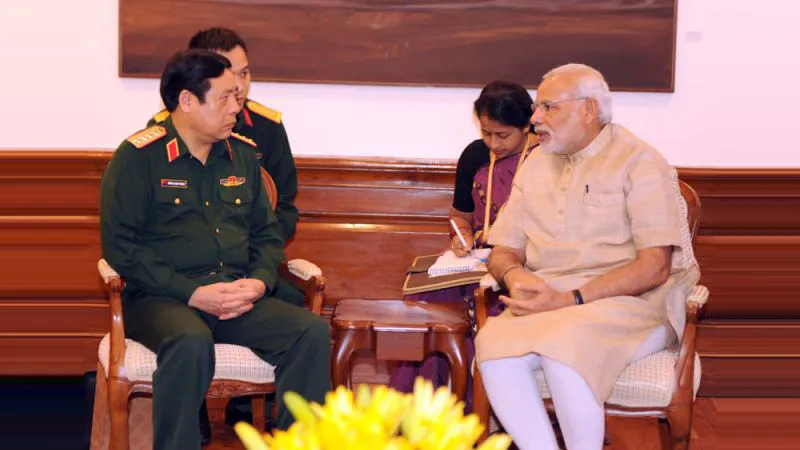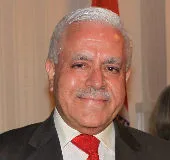
Prime Minister Narendra Modi's visit to Vietnam at the beginning of next month, his third substantive tour to the region, will possibly be the most momentous of them all. What makes the sojourn significant and exceptional is the critical timing of the visit, though the visit would have been decisive and pivotal even under normal circumstances.
Modi’s first visit to the region was to Myanmar in November, 2014 to take part in the ASEAN-India and East Asia Summits (EAS). During this visit, Modi declared the transformation of the ''Look East Policy’’, launched by Prime Minister Narasimha Rao in 1992, to ''Act East Policy’’. This was designed to infuse greater energy in this initiative, expand geographical coverage under its ambit, and invest strategic content to India’s engagement with ASEAN as well as with a broader canvas encompassing other East Asian countries including Japan, Australia, South Korea, Pacific Island nations, etc.
Modi’s second visit took place in November last year to Kuala Lumpur, Malaysia for ASEAN-India as well as EAS, from where he travelled on a bilateral visit to Singapore for elevation of the bilateral partnership to strategic level, as also to commemorate the 50th anniversary of establishment of diplomatic relations. He had also paid a one-day brief visit to Singapore in March, 2015 to attend the funeral of former Singapore Prime Minister Lee Kuan Yew.
Modi's forthcoming bilateral visit to Vietnam is likely to take place after his participation in the G-20 Summit in China on 4-5 September, and in ASEAN-India and EAS in Vientiane, Laos on September 6 & 7.
South China Sea dispute
On July 12, 2016, the Permanent Court of Arbitration (PCA) at the Hague under the United Nations Convention on Law of the Sea (UNCLOS) gave its judgment on the complaint filed by the Philippines against Chinese claims and activities in the South China Sea (SCS). The court declared that China did not enjoy any historical rights in the SCS as it had been claiming under the 9-dash line and also that it could not claim any Exclusive Economic Zone (EEZ) around the small artificial structures it had created. It was a clear, comprehensive verdict against China. The verdict was largely along expected lines, perhaps more favourable to the Philippines and more detrimental to Chinese interests than anticipated. China did not participate in the proceedings of PCA as it did not consider it competent to adjudicate on the issues of sovereignty in the SCS. PCA's award, however, did not address the sovereignty issue but coverage and usage of the waters of the SCS as per provisions of the UNCLOS. China declared the judgment ''null and void''. It has resorted to some aggressive posturing while simultaneously indulging in bellicose and intimidatory statements from the highest level of the government. It has also sought to open channels of communication with the Philippines to solve the issue on a bilateral basis.
Although Vietnam was not a party to the dispute, its position on the legal status of the SCS and exploitation of its fishery and energy resources is as strong as that of the Philippines. It has been facing frequent and aggressive harassment from the Chinese navy in areas it rightly considers under its jurisdiction in accordance with the provisions of the UNCLOS. Over the last many years, tension has erupted in the open with clashes and skirmishes in the sea. This has driven Vietnam to strengthen its ties with India and other powers like the USA and Japan.
Defence ties
Last two years have seen intense exchange of visits between India and Vietnam. President Pranab Mukherjee and External Affairs Minister Sushma Swaraj travelled to Hanoi in September and August, 2014 respectively. During Mukherjee's visit, India clearly enunciated its position on maritime security, freedom of navigation and peaceful resolution of the SCS dispute in accordance with the provisions of the UNCLOS. A far-reaching visit by Vietnamese Prime Minister Nguyen Van Dung to India took place in October 2014 during which PM Modi stated that defence relations with Vietnam are among the most important for India.
In May 2015 Vietnamese Defence Minister visited Delhi while in June, 2016 India’s Defence Minister paid a return visit to Hanoi. During the Vietnamese Defence Minister’s visit, Modi assured him of “India’s full commitment to the strategic partnership between the two countries.” A Joint Vision Statement, outlining the trajectory of bilateral defense cooperation through 2020, was signed.
These heightened exchanges will be capped by Modi's forthcoming tour.
In 1992, India and Vietnam established extensive economic ties. Defence ties benefited hugely from India's
Look East policy. Military cooperation included sale of military equipment, sharing of intelligence, joint naval exercises and training in counterinsurgency and jungle warfare. India regularly deploys its warships for goodwill visits to Vietnamese seas. India is providing a US$100 million credit line to Vietnam which will be used to buy four large patrol vessels that will enable it to secure its waters.
India has so far desisted from offering the supersonic BrahMos missile, a product of Indo-Russian joint venture, to Vietnam as it thought it would antagonise China. Now the Modi government seems positively inclined to offer this powerful weapon to Vietnam. Concurrence of Moscow might be required prior to effecting this sale. In view of close Russia-China relations, this could prove to be somewhat problematic.
Bilateral trade and investment are also likely to receive special attention. India is now among the top ten trading partners of Vietnam. ASEAN-India free trade agreement came into effect in 2010. Trade with Vietnam expanded significantly to US$3.92 billion by the end of 2012. As of 2015, bilateral trade stood at US$ 7 billion. Target for 2020 has been set at US$ 15 billion. This appears eminently achievable.
Impetus to ‘Act East Policy’
Modi's tour to Hanoi is expected to significantly augment the bilateral partnership in strategic, defence, economic and commercial spheres. It will provide a vigorous impetus to the ‘’Act East Policy’’ which has been expanding swiftly since its launch.
India’s recent moves in further strengthening strategic and security partnership with Vietnam have come in close conjunction with the lifting of the longstanding ban by the US on the sales of lethal military equipment to Vietnam. New Delhi's expanding relations with Vietnam are to a considerable extent dictated by China's increasing military power and its growing assertiveness and bellicosity, particularly in the South China Sea. India has been helping Hanoi to beef up its security capabilities, especially naval and air proficiency. India is keen to expand its political, strategic and economic exposure for prospecting oil and gas in the exclusive economic zone of Vietnam to meet its rapidly growing energy demand.
India’s engagement with Vietnam is becoming a benchmark in New Delhi’s rapidly evolving policy toward the region. As India’s ties with China become more contentious, Hanoi is likely to play an ever more critical role in New Delhi’s strategic calculus.
The views expressed above belong to the author(s). ORF research and analyses now available on Telegram! Click here to access our curated content — blogs, longforms and interviews.
 Prime Minister Narendra Modi's visit to Vietnam at the beginning of next month, his third substantive tour to the region, will possibly be the most momentous of them all. What makes the sojourn significant and exceptional is the critical timing of the visit, though the visit would have been decisive and pivotal even under normal circumstances.
Modi’s first visit to the region was to Myanmar in November, 2014 to take part in the ASEAN-India and East Asia Summits (EAS). During this visit, Modi declared the transformation of the ''Look East Policy’’, launched by Prime Minister Narasimha Rao in 1992, to ''Act East Policy’’. This was designed to infuse greater energy in this initiative, expand geographical coverage under its ambit, and invest strategic content to India’s engagement with ASEAN as well as with a broader canvas encompassing other East Asian countries including Japan, Australia, South Korea, Pacific Island nations, etc.
Modi’s second visit took place in November last year to Kuala Lumpur, Malaysia for ASEAN-India as well as EAS, from where he travelled on a bilateral visit to Singapore for elevation of the bilateral partnership to strategic level, as also to commemorate the 50th anniversary of establishment of diplomatic relations. He had also paid a one-day brief visit to Singapore in March, 2015 to attend the funeral of former Singapore Prime Minister Lee Kuan Yew.
Modi's forthcoming bilateral visit to Vietnam is likely to take place after his participation in the G-20 Summit in China on 4-5 September, and in ASEAN-India and EAS in Vientiane, Laos on September 6 & 7.
Prime Minister Narendra Modi's visit to Vietnam at the beginning of next month, his third substantive tour to the region, will possibly be the most momentous of them all. What makes the sojourn significant and exceptional is the critical timing of the visit, though the visit would have been decisive and pivotal even under normal circumstances.
Modi’s first visit to the region was to Myanmar in November, 2014 to take part in the ASEAN-India and East Asia Summits (EAS). During this visit, Modi declared the transformation of the ''Look East Policy’’, launched by Prime Minister Narasimha Rao in 1992, to ''Act East Policy’’. This was designed to infuse greater energy in this initiative, expand geographical coverage under its ambit, and invest strategic content to India’s engagement with ASEAN as well as with a broader canvas encompassing other East Asian countries including Japan, Australia, South Korea, Pacific Island nations, etc.
Modi’s second visit took place in November last year to Kuala Lumpur, Malaysia for ASEAN-India as well as EAS, from where he travelled on a bilateral visit to Singapore for elevation of the bilateral partnership to strategic level, as also to commemorate the 50th anniversary of establishment of diplomatic relations. He had also paid a one-day brief visit to Singapore in March, 2015 to attend the funeral of former Singapore Prime Minister Lee Kuan Yew.
Modi's forthcoming bilateral visit to Vietnam is likely to take place after his participation in the G-20 Summit in China on 4-5 September, and in ASEAN-India and EAS in Vientiane, Laos on September 6 & 7.
